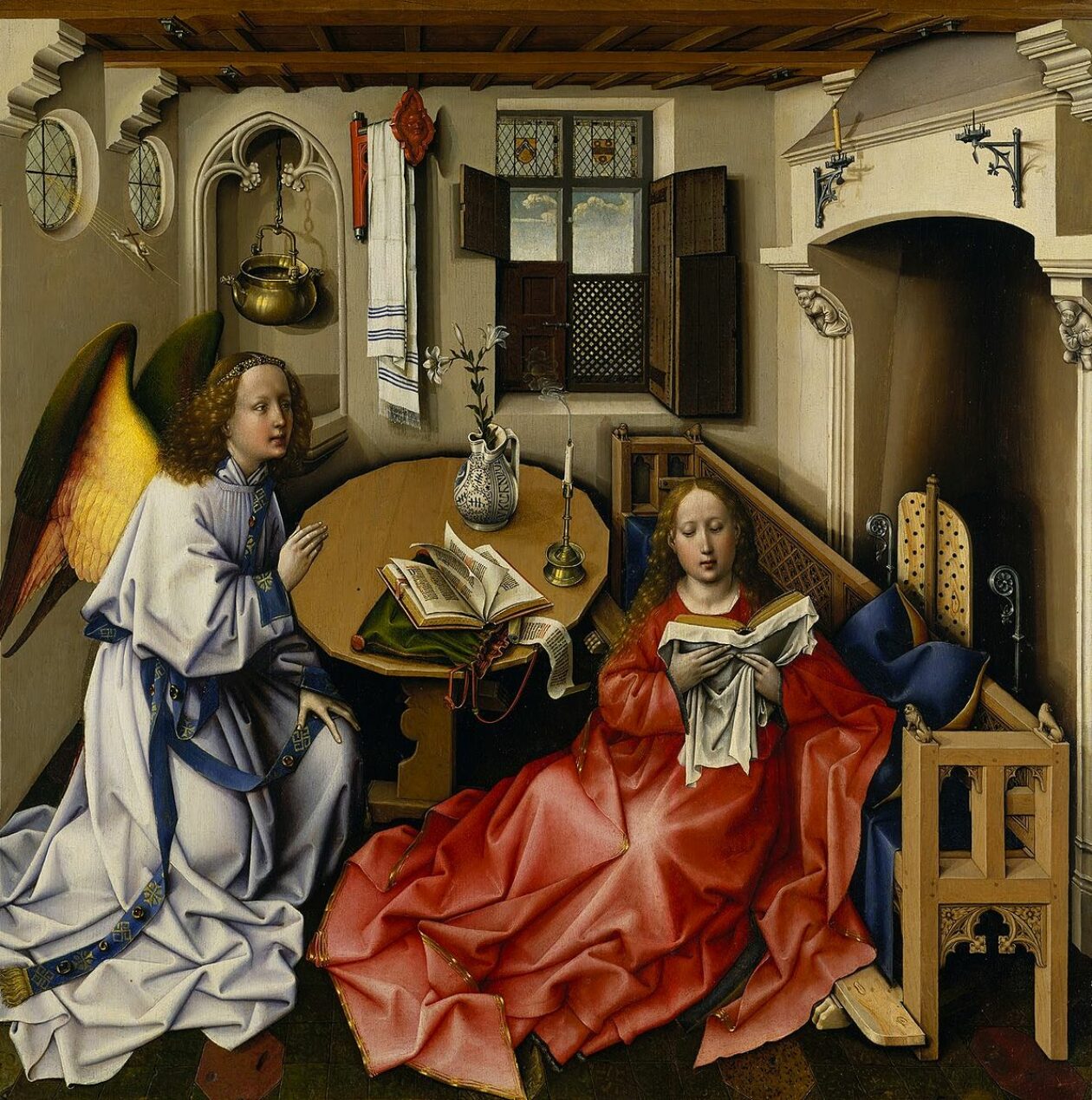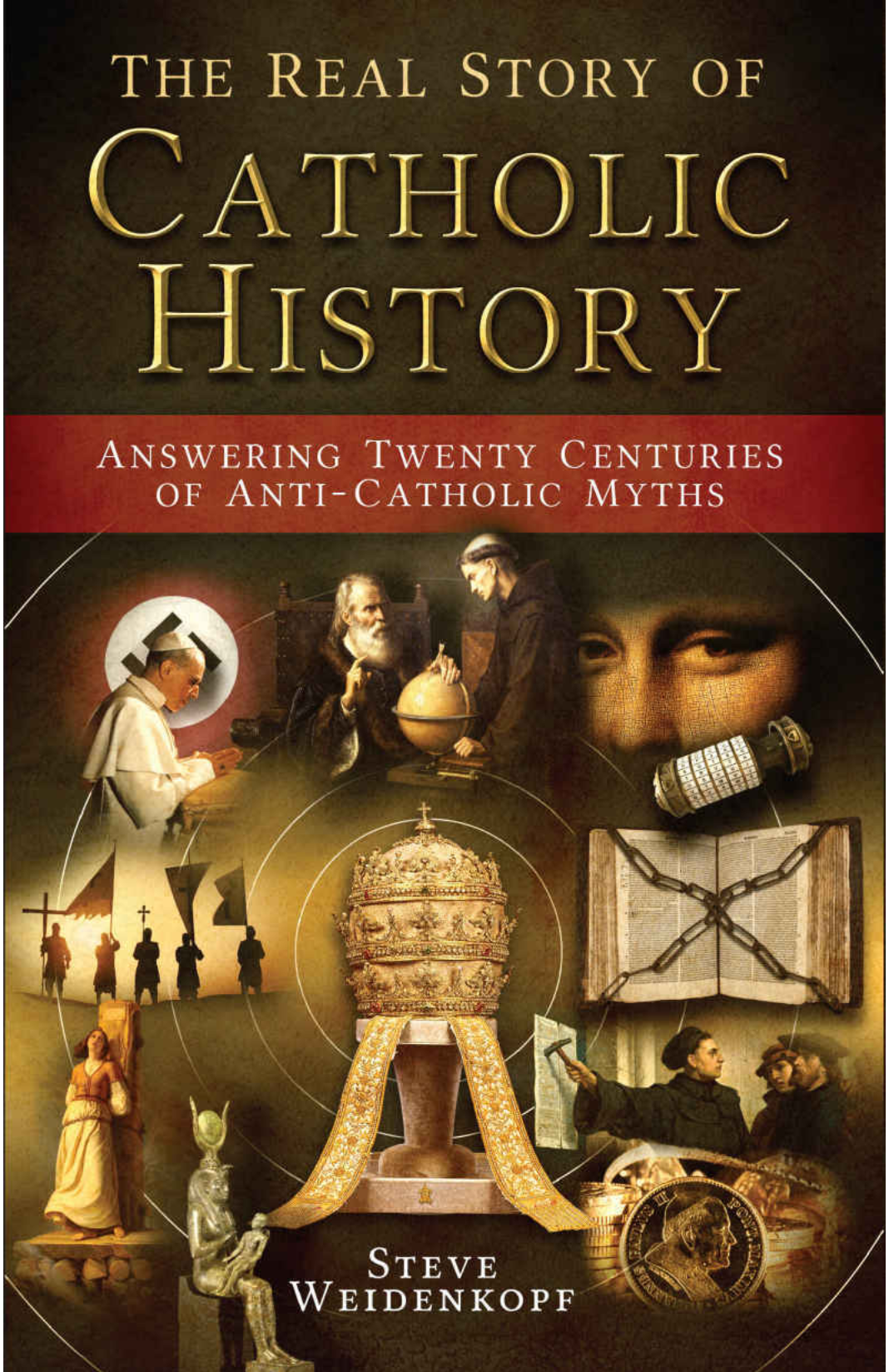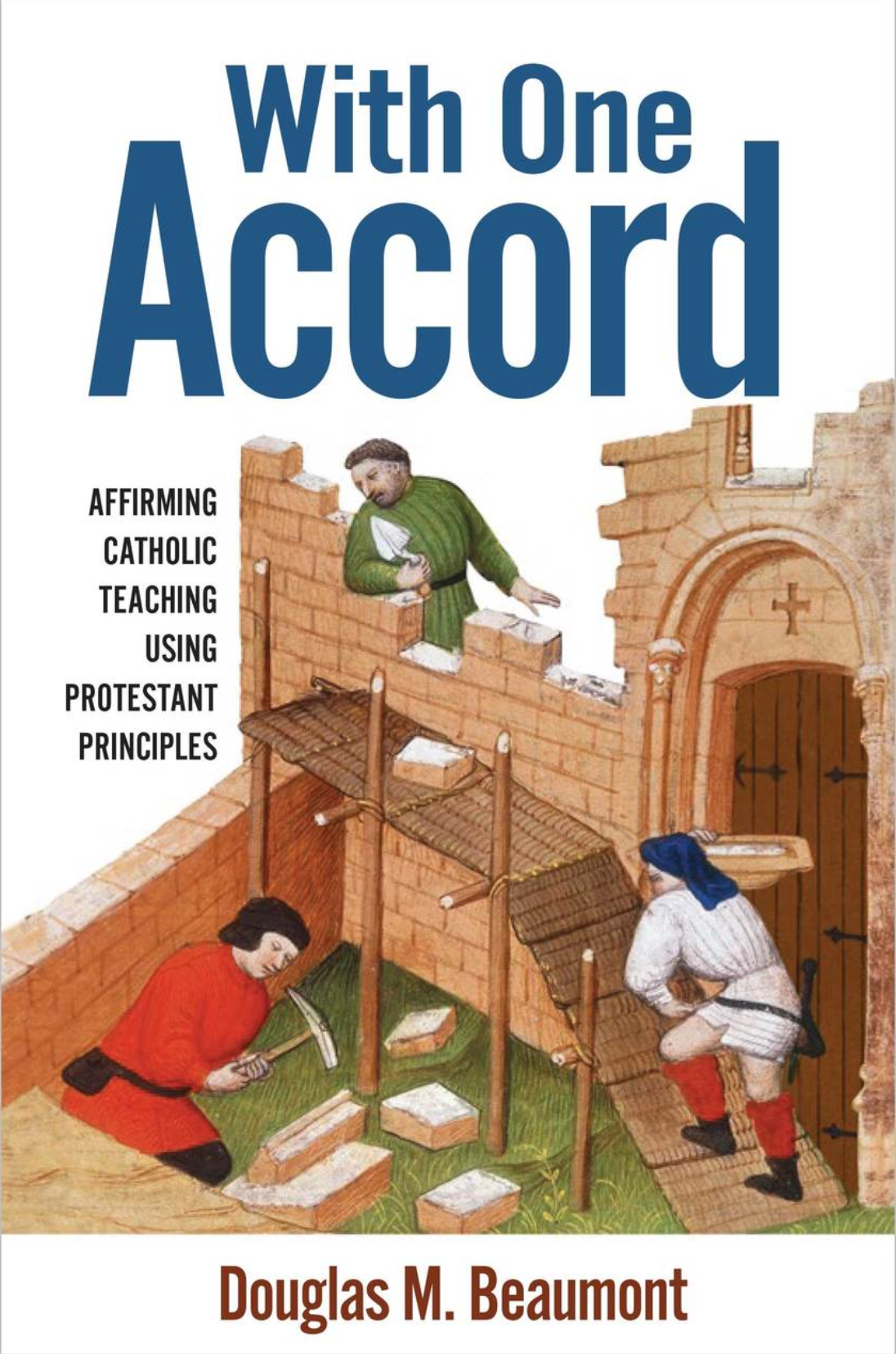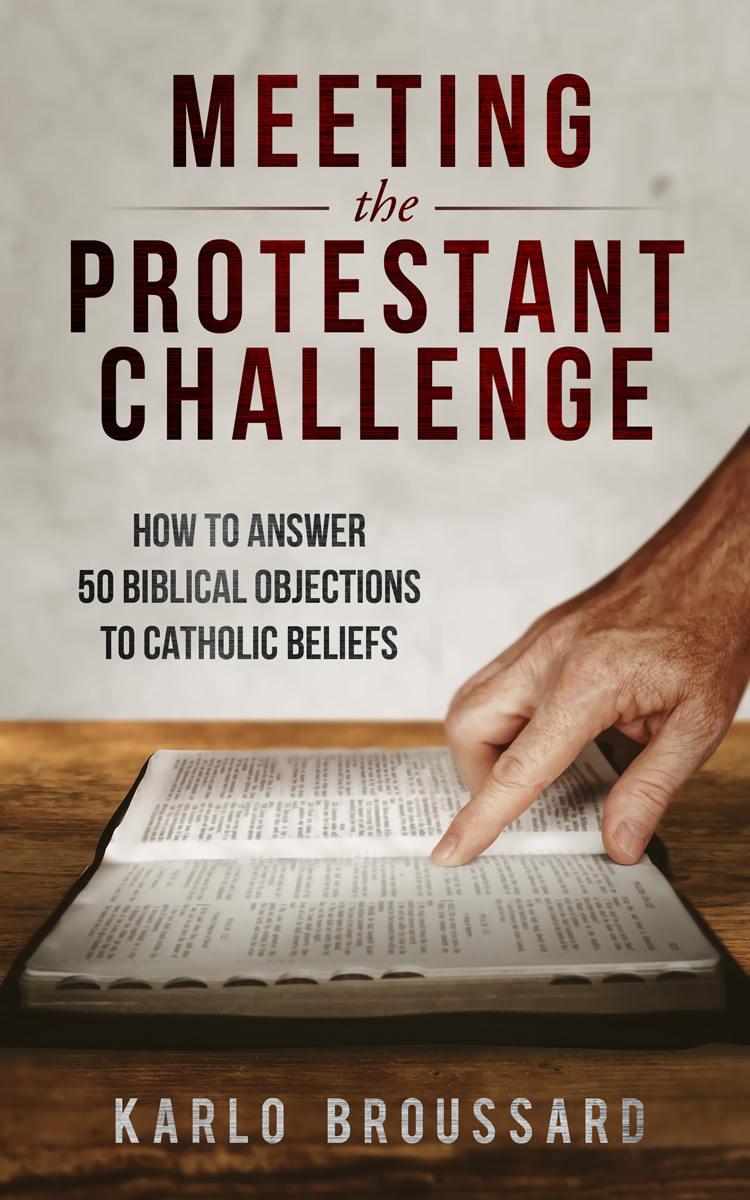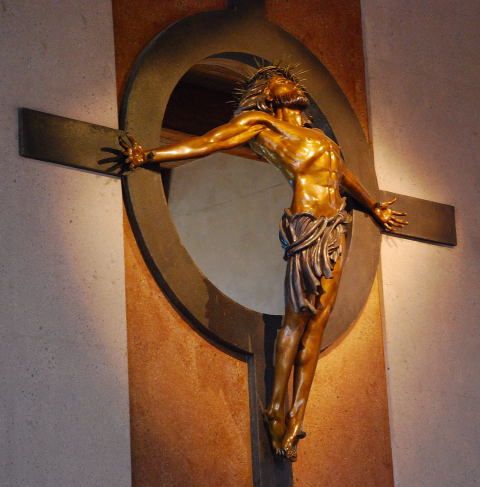The Catholic Church doesn’t have a problem with the Bible. The Church has a problem with inaccurate translations of the Bible. Who is to determine what is inaccurate or not? Who is to determine the meaning of Scripture? The Church. Mt 16:19, 18:18
WHY DID THE CATHOLIC CHURCH CHAIN BIBLES? I HEARD THEY DID IT TO KEEP THE LAITY FROM READING THE BIBLE FOR THEMSELVES?
The same reason Protestants chained them. Because bibles were extremely valuable and susceptible to theft-not to keep them from the laity!
Bibles were rare and valuable. By today’s standards, each one would be worth $100,000. That’s why they were chained by both Protestants and the Catholic Church.
Before the printing press, Bibles were copied by hand and each one took thousands of hours to make so they were scarce. The Church wanted to keep them secure.
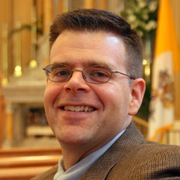
-by Steve Weidenkopf
“In his 1929 book Survivals and New Arrivals, Hilaire Belloc examined the forces attacking the Catholic Church and its role in society. He put them into two chief categories: “survivals,” those “old forms of attack” that continue to be used by the Church’s enemies but are, in the main, on their way out; and “new arrivals,” the newer forms of attack that focus primarily on the Church’s moral teachings rather than its theological doctrines.
Among the “survivals” was a holdover from Protestantism Belloc termed the “biblical attack.” Its key element, he wrote, is “Bibliolatry”—elevating the Bible to the level of an idol. It is Bibliolatry that is the root of the myth that the Church locked and chained Bibles in medieval churches to prevent the laity from reading them. The implication of this myth is that if medieval people had been able to read the Bible for themselves, they would have recognized that the Catholic Church’s teachings are false and would have sought to free themselves from the yoke of Rome.
The notion that the Church restricts access to Scripture to control its interpretation comes from the Saxon monk-turned-revolutionary Martin Luther. Luther published three famous treatises in 1520 in response to the bull of Pope Leo X (r. 1513–1521), Exsurge Domine, that condemned many of Luther’s teachings.
In An Appeal to the Christian Nobility of the German Nation, Luther exhorted Emperor Charles V and the German nobility to reject papal authority and establish a national German Church in opposition to Rome. He argued that Rome had built three “walls” around itself to maintain its hold on Catholics. He identified these walls as the following false teachings:
1) that the spiritual power is greater than temporal power;
2) that only the pope can authentically interpret Scripture; and
3) that only the pope can call an ecumenical council.
He warned the German nobility that they must be aware “that in this matter we are not dealing with men but with the princes of hell.”
To Luther, the belief that the pope is the only interpreter of Scripture (which is not in fact Church teaching but rather Luther’s erroneous understanding of it) was “an outrageous fable” and is not rooted in the only authoritative source of divine revelation that Luther recognized, Scripture itself. Instead, he put forth the idea that all Christians should be able to interpret Scripture for themselves, a doctrine that would lead to a multitude of rival Protestant denominations.
It is widely believed that, to facilitate the lay reading of Scripture, Luther was first to translate the Bible into German. He was not. The first Bible in the German vernacular was produced in the eighth century at the monastery of Monse. By the fifteenth century, there were 36,000 German manuscript bibles in circulation, and a complete printed Bible in the German vernacular appeared in 1529, five years before Luther’s translation was published. In short, the Church made Scripture accessible to laymen long before Luther and the Reformation did.
There is, in fact, a sense in which the Bible is the product of the Catholic Church, as it was the bishops of the Church who decided which books circulating in the fourth century would be considered canonical. Indeed, the Church took great pains throughout its history to guard, defend, and preserve Scripture. Pope St. Damasus I (r. 366–383) first took up the task of publishing a vernacular version of Scripture, and he employed his brilliant yet irascible secretary St. Jerome (342–420) to accomplish the task. Jerome learned Greek and Hebrew to properly translate the word of God into vernacular Latin.
His translation, which became known as the Vulgate, was not well received in North Africa, where a riot erupted over his version of the book of Jonah. The widespread acceptance of the Vulgate in the Church took time. Perhaps part of the resistance can be attributed to the long memory of the Church. Jerome’s new translation came less than a hundred years after Diocletian initiated the Great Persecution. One of his edicts mandated the surrender of all copies of the sacred writings, an event so destructive that its memory remained with the Church long after the persecution ended. The Church maintained great respect and love for the sacred word, as evidenced by the efforts of monks to preserve it.
The sixth century was witness to the activity of a uniquely saintly man who renounced his worldly life to become a hermit. His reputation for holiness attracted many followers, and soon thereafter Benedict of Nursia founded a monastery at Monte Cassino. Benedict’s vision for his monks was rooted in the idea that monasticism was a “school of divine service” in which the monk committed himself to a life of obedience focused on a routine of work, prayer, study, and self-denial. Benedict’s monks preserved and maintained Western civilization through their painstaking work of copying ancient Greek and Roman manuscripts, as well as devoting time to copying and illustrating Scripture.
Working in the scriptoriums of Benedictine monasteries in the Middle Ages was not easy. It took nearly a year to copy a Bible manuscript. The process was laborious and wearisome; as one monk recorded, “He who does not know how to write imagines it to be no labor; but though three fingers only hold the pen, the whole body goes weary.” Any copying work the monk did not finish during the day had to be completed at night, even in the cold winter months.
Bibles were not only copied but richly and beautifully illuminated with elaborate images. Bible illumination began in the fifth century with Irish monks who painstakingly prepared the skins of calves, sheep, or goats into vellum that was used for the manuscripts. The famous Lindisfarne Gospels manuscript, copied and illuminated in the eighth century, was the work of one scribe who used 130 calfskins and took five years to complete the work. The amount of labor that went into each copy of the Bible led to preventing their theft either by locking them in containers or chaining them to desks. In other words, these were security measures, not efforts to keep Scripture from the faithful.
Indeed, protecting and expensive Bible by securing it allowed greater, not lesser, access to it. Moreover, the Bible was usually placed in a public area of a church so those who could read could peruse its pages. The first mention of this protective policy occurs in the mid-eleventh century in the catalog of St. Peter’s Monastery in Weissenburg, Alsace, where it was recorded that four Psalters were chained in the church. Moreover, the practice was not exclusive to the Catholic Church: Protestants also utilized the well-known security measure, as evidenced by the chaining of the Great Bible (also known as the Chained Bible) published by command of King Henry VIII of England in 1539.
The Real Story
The Protestant principle of sola scriptura led to the myth that the Catholic Church kept the word of God from the faithful to maintain its authority; the chaining of bibles in medieval churches was seen as evidence of this. It also led to the false claim that Martin Luther’s translation of the Bible into German was the first such vernacular edition; in fact, there had been many vernacular editions preceding Luther’s, including St. Jerome’s Vulgate.
It was the Church that, far from suppressing the Bible, determined the canon of its books and then preserved and authoritatively interpreted the written word of God throughout its history. Catholic monks painstakingly preserved the sacred writings and beautifully illustrated them throughout the medieval period. These priceless manuscripts were chained or locked up in churches not to prevent their use but to protect against theft, thus allowing greater access to them, which was standard practice in both Catholic and Protestant churches until the printing press enabled mass production of bibles.”
Love, His Word,
Matthew
